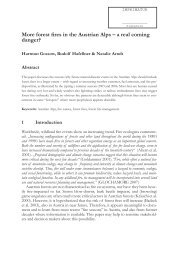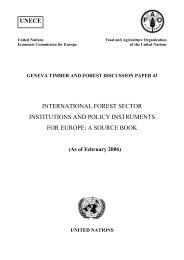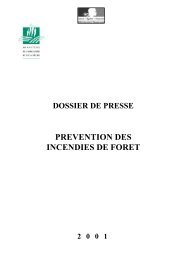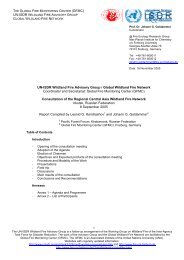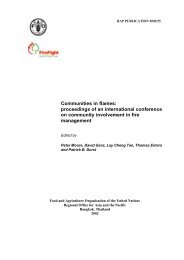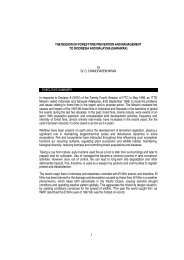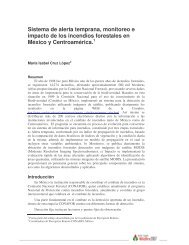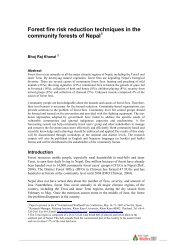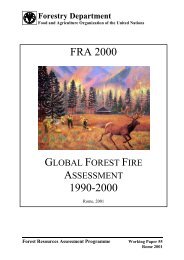Wildland Fire Management: Handbook for Trainers - The Global Fire ...
Wildland Fire Management: Handbook for Trainers - The Global Fire ...
Wildland Fire Management: Handbook for Trainers - The Global Fire ...
You also want an ePaper? Increase the reach of your titles
YUMPU automatically turns print PDFs into web optimized ePapers that Google loves.
A critical facet of the processes <strong>for</strong> supporting CBFiM is to carry out a baseline<br />
study at village level to record local community aspirations. Together with<br />
<strong>for</strong>estry and/or agricultural extension workers and the village leaders organize<br />
community workshops to discuss the fi re history of the village, fi re use, wildfi re<br />
causes, wildfi re impacts, past fi re management ef<strong>for</strong>ts.<br />
11.6 <strong>The</strong> lengthy process of changing human behaviour<br />
Out of all global fi res 95% stem from various human activities; consequently<br />
there<strong>for</strong>e, unwanted fi res globally should be reduced by proactive means of<br />
educating people.<br />
However, many Governments, especially in developed nations, have over the last<br />
years, invested most of their resources in heavy fi re fi ghting equipment, rather<br />
than in educating their people. <strong>The</strong> neglect to educate the growing population can<br />
in many cases be seen in the growing number of wild fi res (uncontrolled fi res).<br />
<strong>The</strong>re<strong>for</strong>e, awareness rising was in the early 2000s, considered a key issue when<br />
aiming at success in fi re prevention, mitigation and education programmes<br />
worldwide. Human values, perceptions, beliefs, behaviour and cultural norms,<br />
were considered as important as ecological values in fi re management. Enabling<br />
local people to become involved in managing their fi res is a lengthy fundamental<br />
process, which will require several years to become effective.<br />
Awareness raising and increased participation of rural populations in wildfi re<br />
prevention and fi re management, is the main goal of organizing national, regional<br />
or local <strong>Fire</strong> Campaigns. Based on experience drawn from many prevention<br />
campaigns carried out around the world, the following aspects should be<br />
included into village campaigns in one or the other way:<br />
• Functions and importance of landscapes;<br />
• <strong>The</strong> ecological, economic, social and cultural benefi ts of fi re;<br />
• <strong>The</strong> role of fi re in the landscape;<br />
• <strong>The</strong> implications of removing fi re from its ecological, traditional or<br />
economic function in the landscape;<br />
• Possible wildfi re risks;<br />
• Negative impacts of wildfi res;<br />
• Introduction to laws and regulations related to fi re;<br />
• Prescribed burning in shifting cultivation and agriculture; and<br />
• Possibilities <strong>for</strong> the participation of rural communities in fi re management.<br />
<strong>The</strong> active participation of communities in village campaigns is very important<br />
and facilitators should understand local culture. <strong>The</strong> programme should allow<br />
as much contribution and inputs as possible from the participants and good<br />
visualization and easy-to-understand contents are crucial in presentations given<br />
by facilitators.<br />
233





